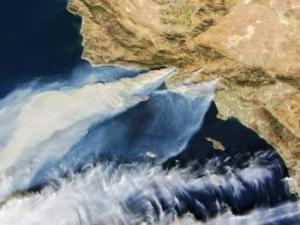Content:
In December, a team of researchers and students at the University of California, Santa Barbara made the best of a local tragedy. The Thomas Fire, the largest in the state’s history, burned nearly 300,000 acres (120,000 hectares) in Ventura and Santa Barbara counties north of Los Angeles. The smoke plume could be seen from space. (From Oceans Deeply/ By Ian Evans) — Around that time, oceanographer Kelsey Bisson was one of two graduate students leading an expedition into the Santa Barbara Channel – a diverse marine ecosystem just off the coast. They were planning to study how zooplankton and phytoplankton move up and down the water column in the course of the sun’s daily cycle, but after seeing a NASA photo of the smoke plume, Bisson realized they had a “once-in-a-lifetime” opportunity. The ash would be headed right toward their ship’s planned path, which would allow them to study its effect on the ocean life. Climate change is expected to increase the rate and severity of wildfires, and not much is known about how these blazes affect coastal marine ecosystems. To study that, researchers have to be at the right place at the right time. Luckily, Bisson was – and Oceans Deeply spoke to her about what she learned.
Related Link:
News Date:
Friday, January 19, 2018
January 22, 2018 - 11:24am


